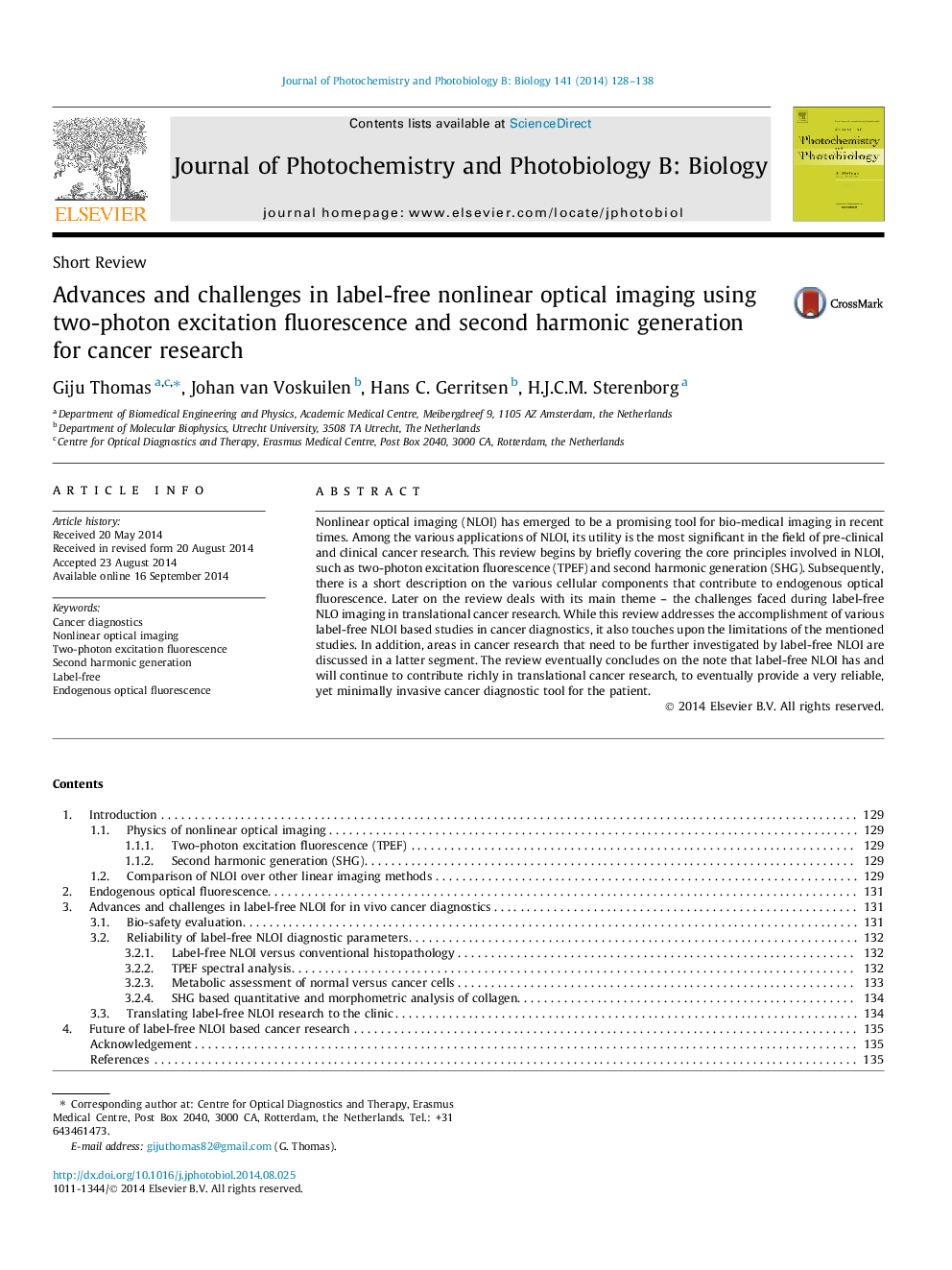| Article ID | Journal | Published Year | Pages | File Type |
|---|---|---|---|---|
| 29847 | Journal of Photochemistry and Photobiology B: Biology | 2014 | 11 Pages |
•Label-free nonlinear optical imaging (NLOI) is a promising tool for cancer diagnosis.•Label-free NLOI can detect microscopic changes in cancerous tissues non-invasively.•Label-free NLOI can monitor metabolic and collagen related changes during carcinogenesis.•Clinical translation of this modality requires optimising biosafety issues and improving deeper tissue imaging.•Other challenges include miniaturising NLOI setups for better access to internal organs.
Nonlinear optical imaging (NLOI) has emerged to be a promising tool for bio-medical imaging in recent times. Among the various applications of NLOI, its utility is the most significant in the field of pre-clinical and clinical cancer research. This review begins by briefly covering the core principles involved in NLOI, such as two-photon excitation fluorescence (TPEF) and second harmonic generation (SHG). Subsequently, there is a short description on the various cellular components that contribute to endogenous optical fluorescence. Later on the review deals with its main theme – the challenges faced during label-free NLO imaging in translational cancer research. While this review addresses the accomplishment of various label-free NLOI based studies in cancer diagnostics, it also touches upon the limitations of the mentioned studies. In addition, areas in cancer research that need to be further investigated by label-free NLOI are discussed in a latter segment. The review eventually concludes on the note that label-free NLOI has and will continue to contribute richly in translational cancer research, to eventually provide a very reliable, yet minimally invasive cancer diagnostic tool for the patient.
